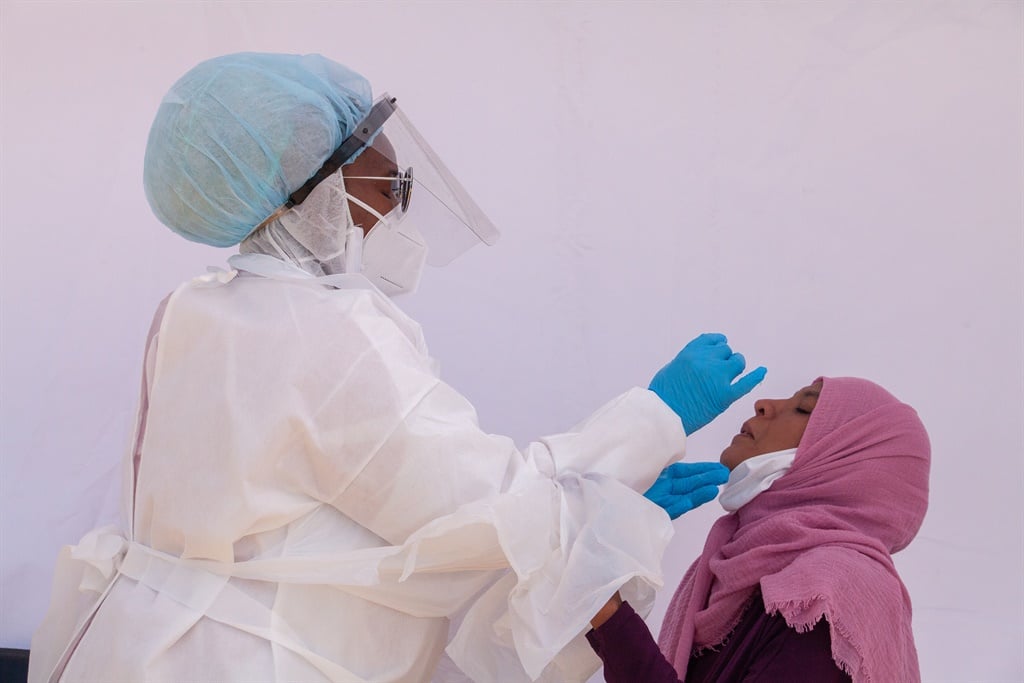


Health workers conduct mass Covid-19 screening and testing at Rose Park in Lenasia.
- The doubling of coronavirus cases to 101 590 in just 14 days is possibly as a result of the change in testing strategy. SA is now recording an average of 891 cases a day.
- It took 946 817 tests between 5 March and 8 June to find the first 50 000 cases, and just 437 092 tests to find the next 50 000 cases.
- Lack of clarity over date of sample collections and processing hinder estimates of the rate of infection increase under lockdown Level 3.
In the past two weeks, the number of confirmed Covid-19 cases in South Africa doubled from 50 000 to 100 000.
It took 95 days for the country to reach 50 000 cases, between 5 March and 8 June, but only 14 days to record another 50 000 cases between 9 and 22 June.
On Monday, the national Department of Health reported a confirmed 101 590 cases. On 8 June, the number of cases stood at a reported 50 879.
Comparatively, it took 946 817 tests to find the first 50 000 cases, and a little under half of that, 437 092 tests, to find the next 50 000 cases.
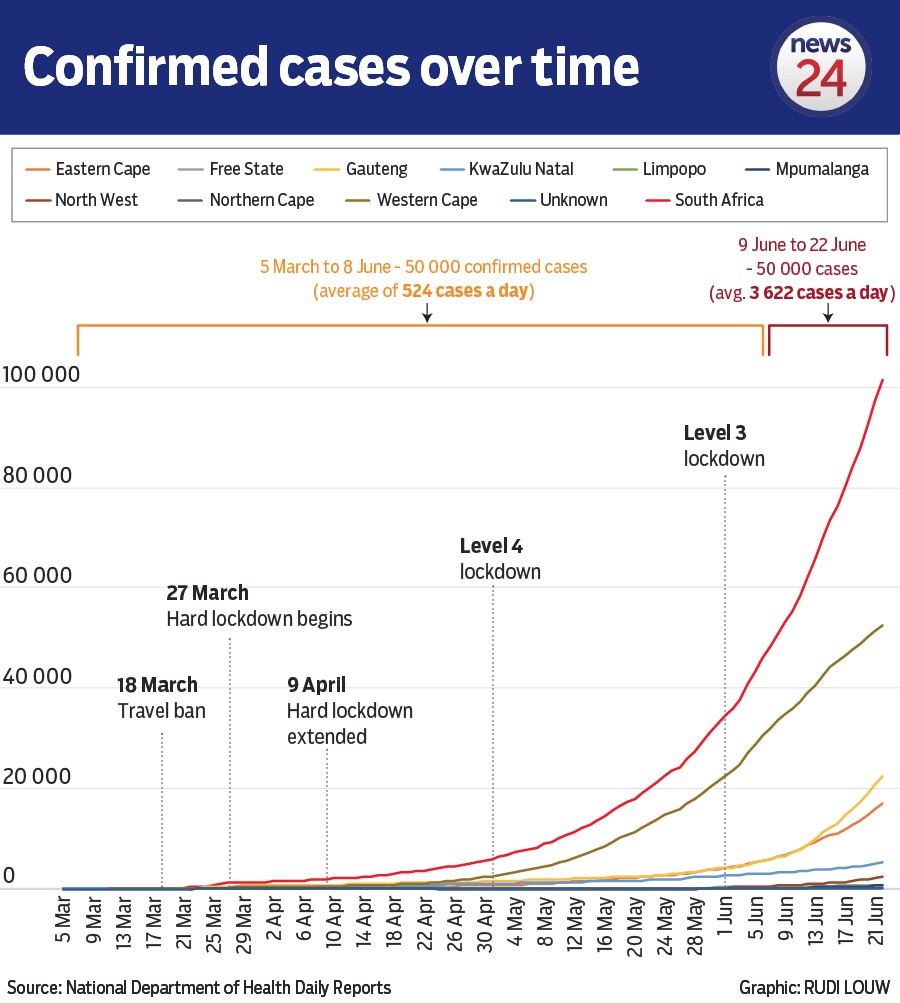


News24 previously reported that Health Minister Zweli Mkhize had confirmed the Covid-19 testing strategy was shifting to focus on people in designated hotspot areas, patients already admitted to hospitals and healthcare workers.
The Western Cape, by far the hardest hit province, was forced to adopt a more targeted testing strategy early in May.
As of Monday, more than 1.3 million laboratory tests for Covid-19 had been conducted across the public and private sector.
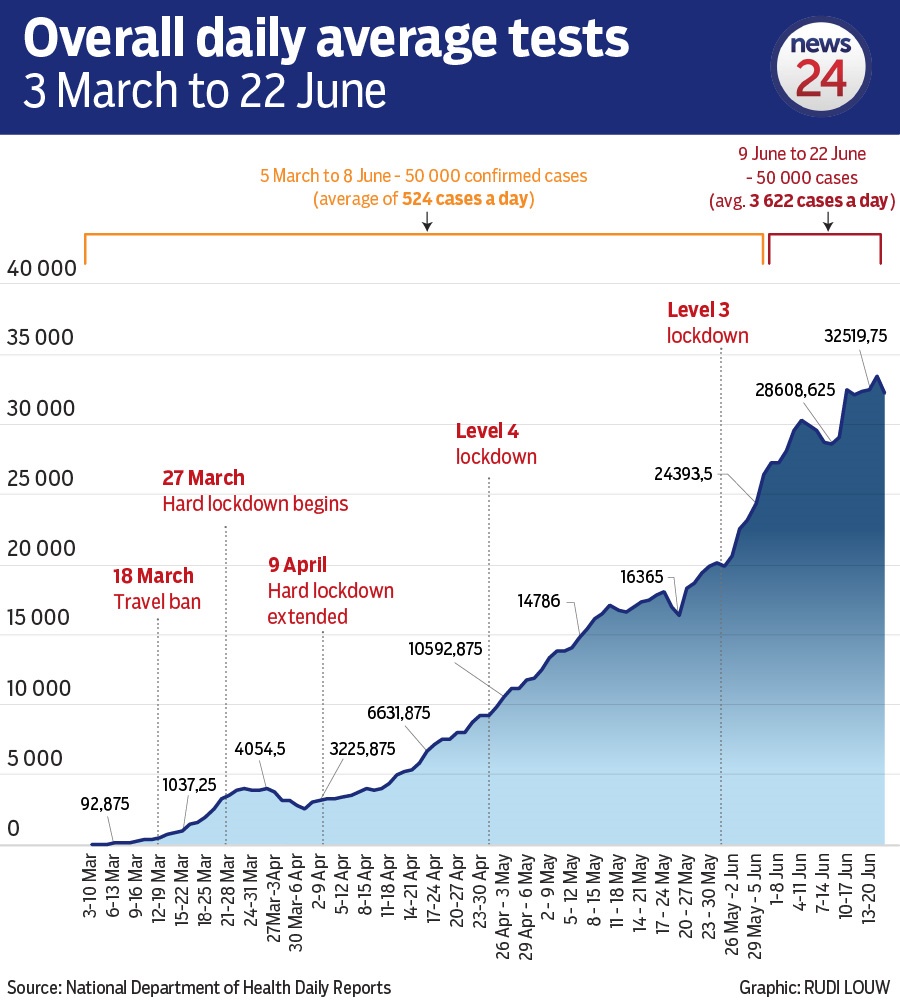


Scientists advising government and Mkhize told News24 a mass screening and testing programme, which resulted in more than 14 million citizens being screened for Covid-19 and more than 100 000 being referred for testing, was partly responsible for clogging overstretched public labs, resulting in the backlogs.
Similar to many countries around the world, South Africa is battling with a testing and extraction kit shortage that is hampering laboratory testing. This has resulted in a severe backlog of tests.
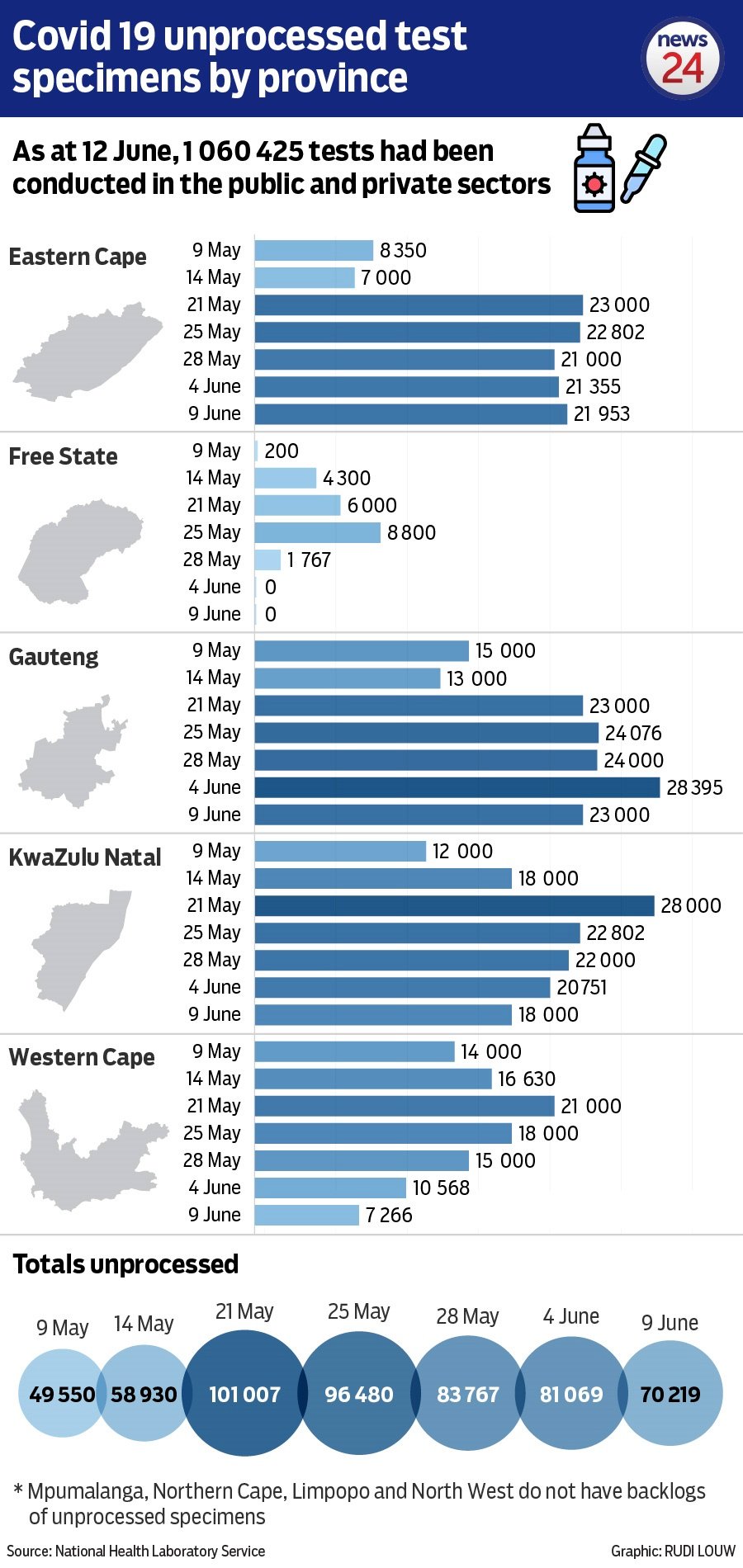


This graph shows the latest available data on the number of backlogged tests per province.
According to the World Health Organisation the average incubation period for Covid-19 is five days, which would suggest that cases reported since 5 June reflect new infections that occurred during lockdown Level 3, which commenced on 1 June.
Under Level 3, citizens are allowed more extensive movements within their own province and represents a significant relaxation of the “hard lockdown” regulations that came into effect in late March.
INFOGRAPHICS | Covid-19: The seven hardest-hit districts in SA and why lockdown can’t be lifted yet
But, a lack of clarity from the Department of Health over when samples were collected and tested and what percentage of new cases stem from backlog samples, hinder definitive analysis to determine when infections may have taken place.
It is clear, however, that South Africa is recording new cases at the highest rate since the coronavirus reached the country’s shores in early March, with further relaxation of lockdown regulations set to take effect later this month – including the reopening of restaurants for sit-down customers.
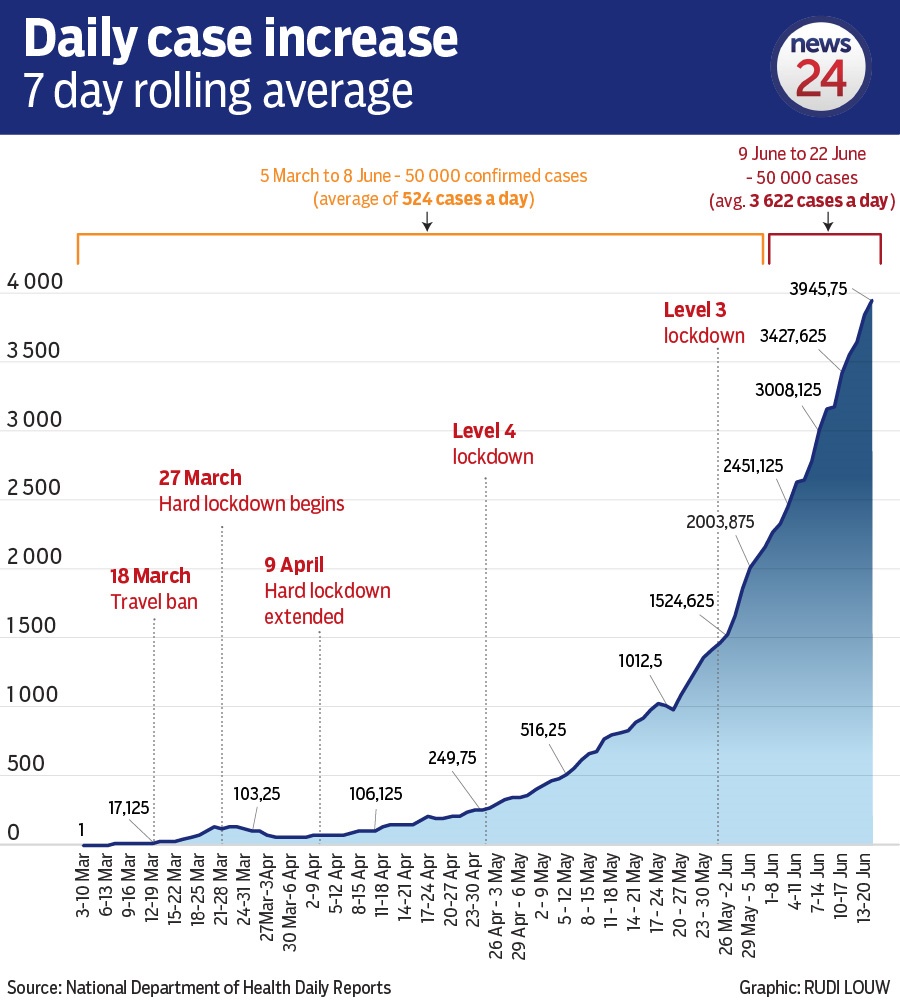


Between 5 March and 8 June, an average of 524 new cases were recorded every day. That average has increased to 891 new daily cases by 22 June.
A rolling seven-day average graph of daily new cases shows how sharply the average number of weekly reported cases has increased over time.

